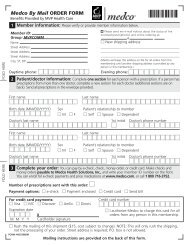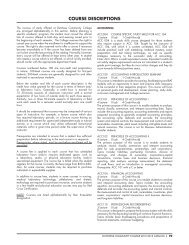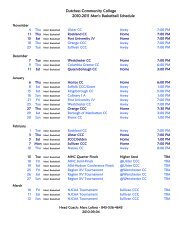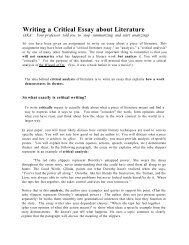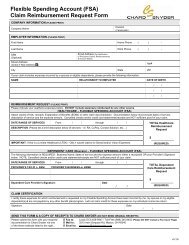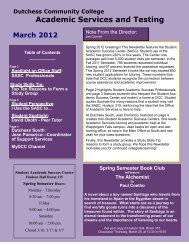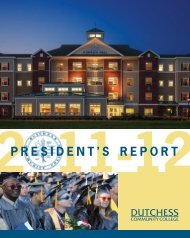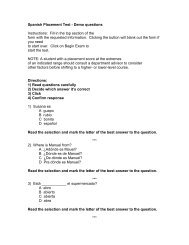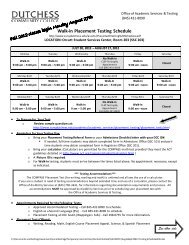TECHNICAL REPORT WRITING GUIDELINES
TECHNICAL REPORT WRITING GUIDELINES
TECHNICAL REPORT WRITING GUIDELINES
You also want an ePaper? Increase the reach of your titles
YUMPU automatically turns print PDFs into web optimized ePapers that Google loves.
INTRODUCTIONThe purpose of a technical report is to completely and clearly describe technical work, why it was done,results obtained and implications of those results. The technical report serves as a means ofcommunicating the work to others and possibly providing useful information about that work at somelater date. A well‐written report allows the reader to quickly understand what has been accomplished.The report also provides sufficient detail to allow the reader to recreate the results although the level ofdetail provided depends heavily on the report’s audience and any proprietary nature of the work.Clear presentation of results is at least as important as the results themselves; therefore, writing areport is an exercise in effective communication of technical information. Results, such as numericalvalues, designed systems or graphs by themselves are not very useful. To be meaningful to others,results must be supported by a written explanation describing how results were obtained and whatsignificance they hold, or how a designed system actually functions. Although the person reading thereport may have a technical background, the author should assume unfamiliarity with related theoryand procedures. The author must therefore supply details that may appear obvious or unnecessary.With practice, the technical report writer learns which details to include.The key to a well‐written report is organization. A report that is divided into several sections, occurringin a logical sequence, makes it easy for the reader to quickly obtain an overview of the contents as wellas locate specific information. This document provides guidelines for producing a well‐written technicalreport.THE FORMAL <strong>TECHNICAL</strong> <strong>REPORT</strong>The formal technical report contains a complete, concise, and well‐organized description of the workperformed and the results obtained. Any given report may contain all of the sections described hereinor a subset, depending upon the report requirements. These requirements are decided by the authorand are based on the audience and expected use of the report.All reports have certain aspects in common regardless of expected usage. Common report sections arepresented first, and all possible sections potentially included in a report are discussed afterwards.UNIVERSAL ASPECTS OF ALL <strong>REPORT</strong>S• The report should be written in an active voice using the third person in most instances. Avoid usingpersonal pronouns. Personal pronouns tend to personalize the technical information that isgenerally objective rather than subjective in nature. Use correct grammar, punctuation, and spelling.Attention to these details results in a professional tone to the report.• All diagrams must be neatly presented and should be computer generated. Use a computersoftware package, such as Paint, Multisim or AutoCAD, to draw diagrams. Leave at least a one‐inchmargin on all sides of a full page diagram and always number and title all figures. Always insert afull‐page diagram or graph so it can be read from the bottom or from the right side of the page.• All pages of the report after the Table of Contents must include the page number.• Any information in the report that is directly quoted or copied from a source must be cited using theproper notation [1, 2, 3].1



